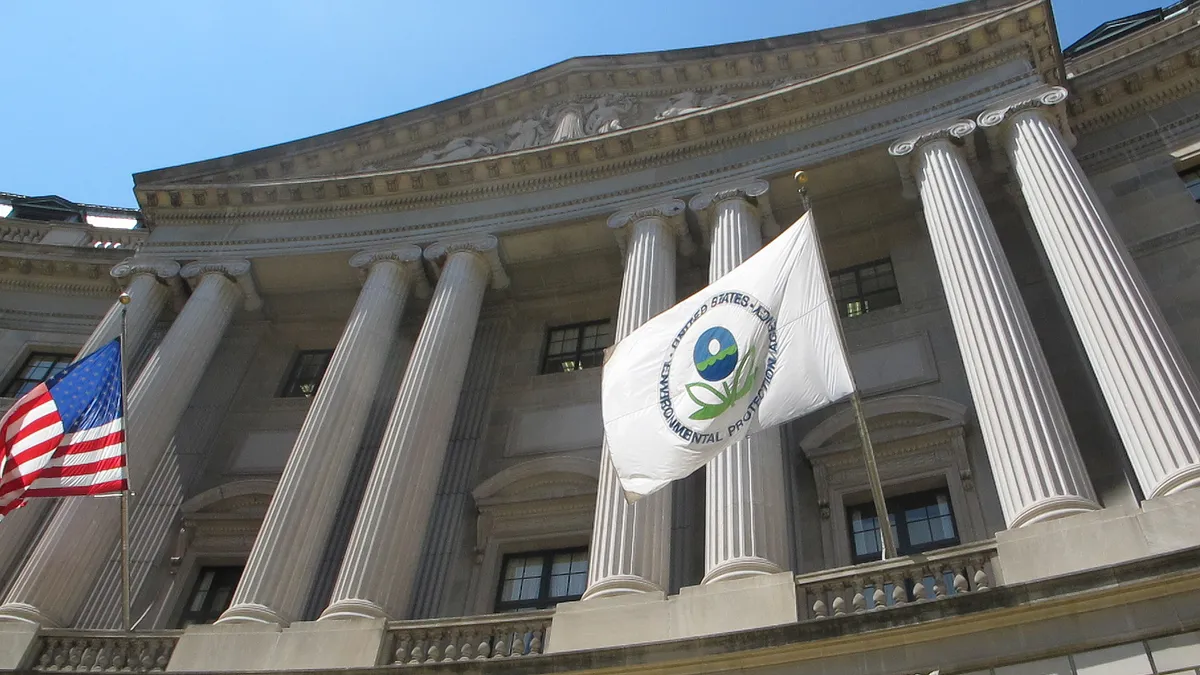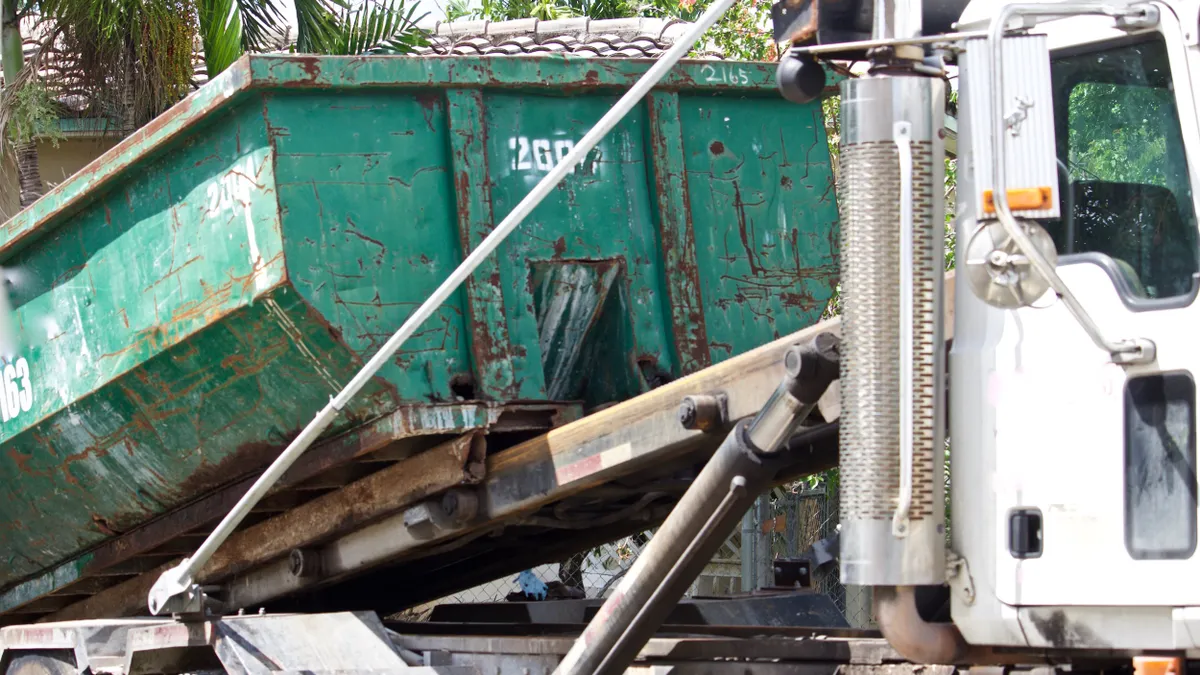Dive Brief:
- The U.S. EPA reported a slight increase in the national recycling rate, from 34.6% in 2015 to 35.2% in 2017, in a newly released edition of the Advancing Sustainable Materials Management report. Overall MSW generation increased from 262.1 million tons to 267.8 million tons during that same period, while per capita generation held steady around 4.51 pounds daily.
- Among the more notable shifts, the volume of material composted (excluding backyard composting) reached a record high of 27 million tons in 2017 – up from 23.4 million tons in 2015. Yard trimmings comprised the vast majority of this increased activity and overall volume.
- Products with the highest recycling rates in 2017 included lead-acid batteries (99.1%), corrugated boxes (88.4%), steel cans (70.9%), newspapers/mechanical papers (76.8%), major appliances (60.3%), aluminum cans (49.2%), mixed paper (48.3%), tires (39.9%) and certain consumer electronics (35.9%).
Dive Insight:
The latest edition of the agency's highly-cited report indicates a fairly static picture of the U.S. waste landscape based on past data. Out of the 267.8 million tons of projected MSW generation in 2017, 52% of it still went to landfills and 12.7% to "combustion with energy recovery." Separately, the EPA also reported an increase in C&D generation to 569 million tons in 2017. This tracks with the increased volumes reported by both publicly-traded landfill and incinerator operators in recent years.
While there have been many questions about how much more recyclable material is getting disposed as a result of market shifts, and data does show a decline in volumes between 2015 and 2017, this report isn't able to answer that question. The effects of scrap import restrictions in China and other Asian countries – ranging from curbside program cuts to disposal of select materials – weren't fully felt until 2018 onward.
Containers and packaging still accounted for the largest portion of MSW generated, but food was the product category with the highest rate of both landfill disposal and incineration. This latest report may offer some sign of changing trends on that front, with the agency directly calling out an increase in food waste recycling rates from 5.3% to 6.3%. That mirrors an ongoing increase in the number of residential curbside collection programs, as previously highlighted by BioCycle, as well as commercial diversion requirements.
Market dynamics continue to vary regionally, with plenty of factors hindering any expectation of rapid change on U.S. recycling rates in the near-term, but the report also notes disposal is becoming more expensive. Average landfill tip fees reached a record high of $51.82 per ton in 2017, per the report. The Environmental Research & Education Foundation's latest data indicates average tip fees reached $55.36 so far in 2019.
While the economic case for recycling is notable – as covered in the report and expected to be a focus at the agency's America Recycles Day events this week – the environmental case is also still presented as compelling. After notably skipping any mention of greenhouse emissions in its 2015 report, the EPA once again focused on emissions reduction potential. The amount of material recycled and composted in 2017 reportedly resulted in a reduction of nearly 185 million metric tons of carbon dioxide equivalent in 2017.
Correction: A previous version of this article understated the emissions reduction equivalency for recycling and composting activity in 2017.















